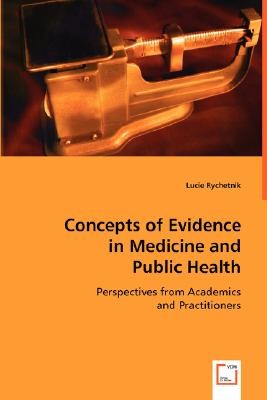
- We will send in 10–14 business days.
- Author: Lucie Rychetnik
- Publisher: VDM Verlag Dr. Mueller E.K.
- Year: 2008
- Pages: 152
- ISBN-10: 3639003543
- ISBN-13: 9783639003543
- Format: 15.2 x 22.9 x 0.8 cm, softcover
- Language: English
- SAVE -10% with code: EXTRA
Concepts of Evidence in Medicine and Public Health (e-book) (used book) | bookbook.eu
Reviews
Description
The use of evidence in medicine and public health is often conten-tious. Evidence-Based Medicine (EBM) has led to a new generation of ideas about evidence, and introduced the culture and language of evidence-based practice. Yet `what is evidence?` remains a key con-temporary debate, and the appraisal and application of evidence remain a common source of disagreement and misunderstanding. This text examines how evidence is defined and used by eminent thinkers in both medical and public health fields, that is, by academics and practitioners who teach and influence others. The interviews and field research in this book were conducted at a time of evolution and change (1995 - 2000) when EBM was seriously challenging main-stream thinking. A number of different approaches to evidence are described and explained, and their often complementary relationships revealed. The three-dimensional models of evidence that are pre-sented integrate the once competing perspectives, and provide valuable tools for navigating the new era of evidence-based policy and practice. This book will also become one of the essential texts for anyone involved in teaching about evidence in medicine and public health.
EXTRA 10 % discount with code: EXTRA
The promotion ends in 20d.21:57:57
The discount code is valid when purchasing from 10 €. Discounts do not stack.
- Author: Lucie Rychetnik
- Publisher: VDM Verlag Dr. Mueller E.K.
- Year: 2008
- Pages: 152
- ISBN-10: 3639003543
- ISBN-13: 9783639003543
- Format: 15.2 x 22.9 x 0.8 cm, softcover
- Language: English English
The use of evidence in medicine and public health is often conten-tious. Evidence-Based Medicine (EBM) has led to a new generation of ideas about evidence, and introduced the culture and language of evidence-based practice. Yet `what is evidence?` remains a key con-temporary debate, and the appraisal and application of evidence remain a common source of disagreement and misunderstanding. This text examines how evidence is defined and used by eminent thinkers in both medical and public health fields, that is, by academics and practitioners who teach and influence others. The interviews and field research in this book were conducted at a time of evolution and change (1995 - 2000) when EBM was seriously challenging main-stream thinking. A number of different approaches to evidence are described and explained, and their often complementary relationships revealed. The three-dimensional models of evidence that are pre-sented integrate the once competing perspectives, and provide valuable tools for navigating the new era of evidence-based policy and practice. This book will also become one of the essential texts for anyone involved in teaching about evidence in medicine and public health.


Reviews